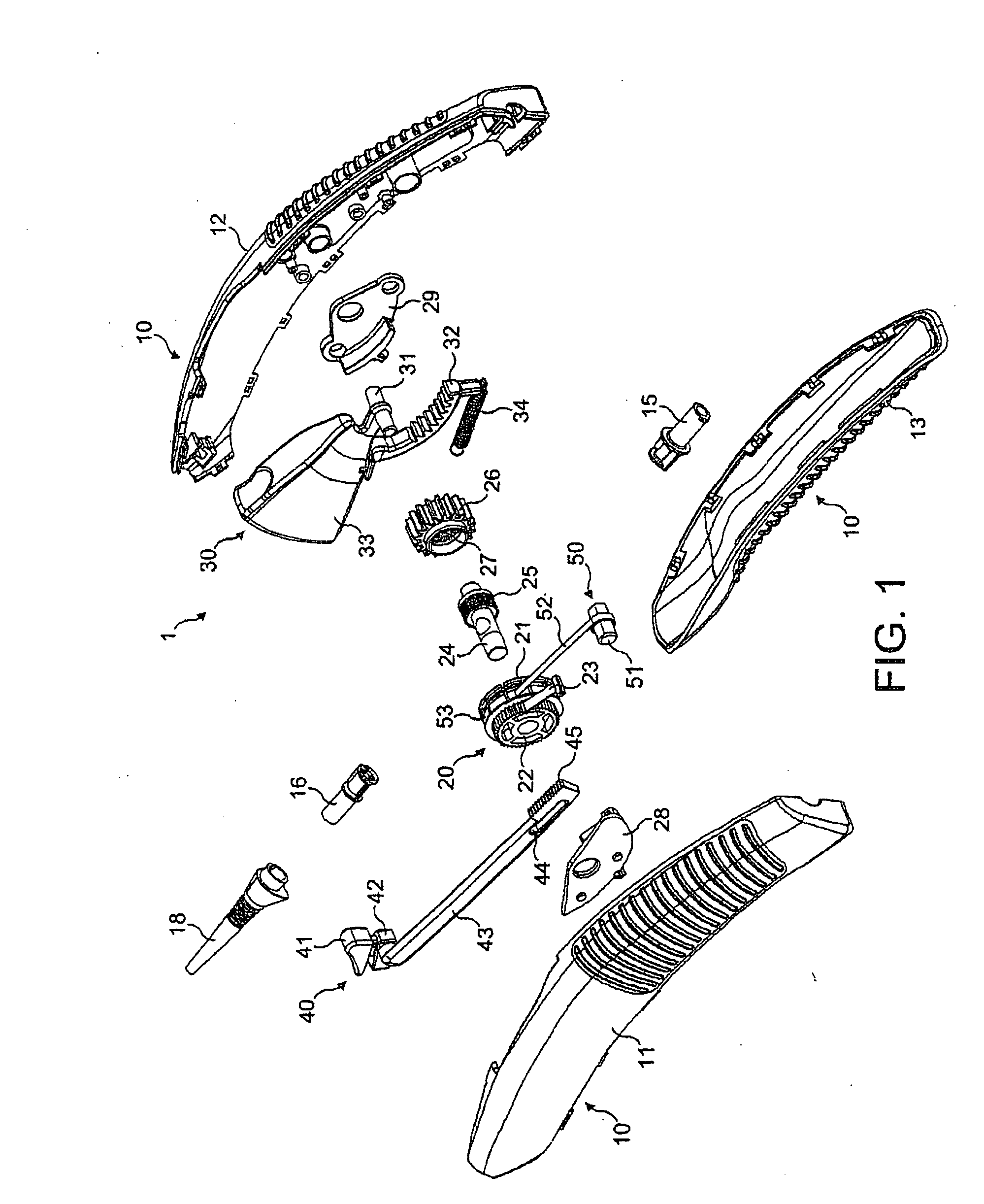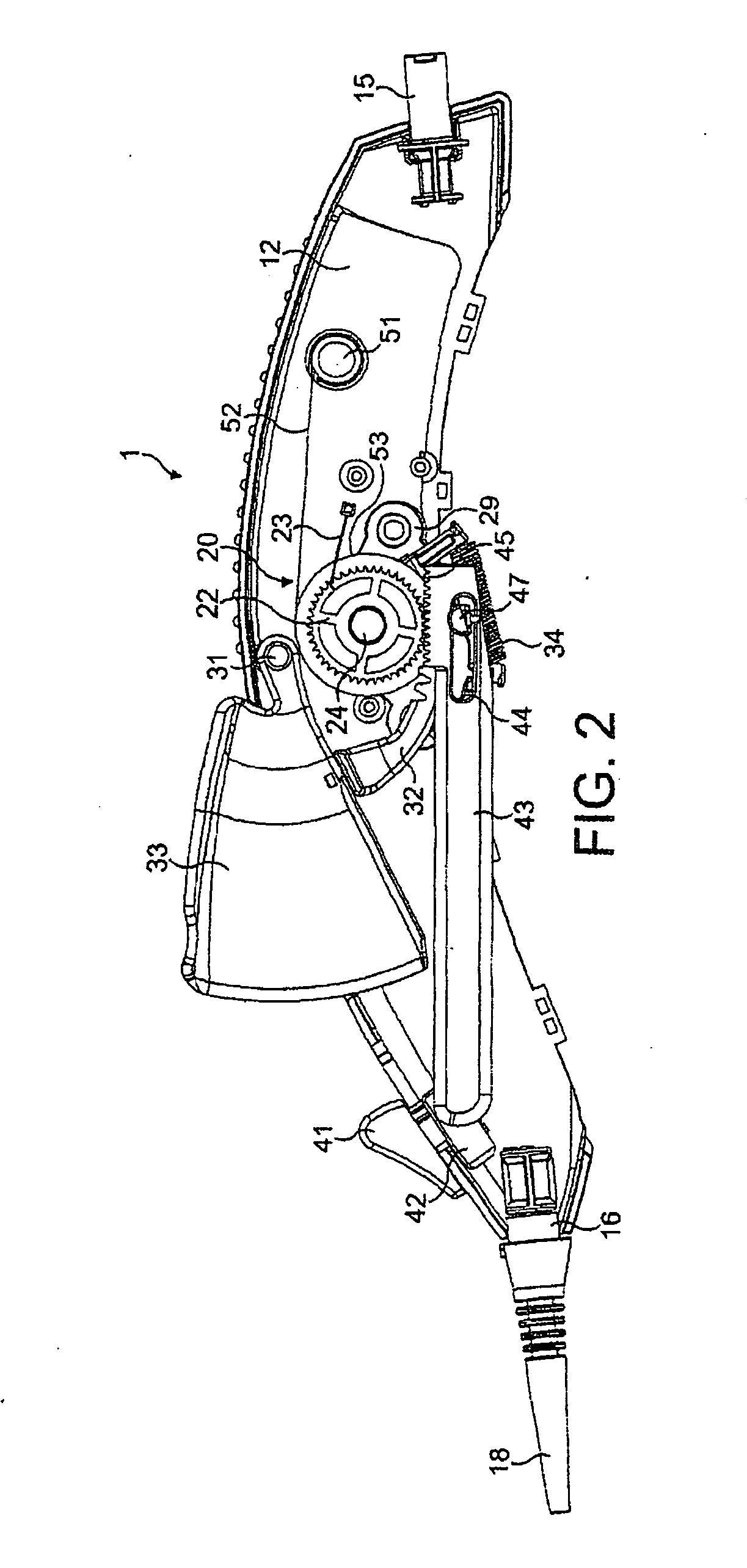Device for catheter sheath retraction
a technology of catheter sheath and device, which is applied in the field of catheter sheath retraction devices, can solve the problems of catheter compression producing undesirable, catheter withdrawal not being specifically accounted for the inherent residual tolerance and material resilience of surgical catheter construction, and preventing premature catheter withdrawal or unnecessary further movement of the elongate member. , the effect of being readily adaptable to different situations
- Summary
- Abstract
- Description
- Claims
- Application Information
AI Technical Summary
Benefits of technology
Problems solved by technology
Method used
Image
Examples
Embodiment Construction
[0063]The following detailed description is directed to a specific example of a catheter sheath retraction device, suitable for connection to the proximal end of a stent delivery catheter (elongate body) for retracting the catheter outer sheath, by virtue of a sheath retraction wire (elongate member), so as to expose a stent at the distal end of the catheter. It will be appreciated, however, that the utility of the disclosed device and the components of the actuator mechanism may find utility in alternative applications where actuation to achieve relative motion between two elongate components is required.
[0064]In the present specification, as is usual in this technical field, the term “proximal” refers to the direction or end of the device which, when in use, is generally towards the medical practitioner, and the term “distal” refers to the opposite sense, i.e. towards the patient or away from the medical practitioner.
[0065]The following description is made with reference to FIGS. ...
PUM
 Login to View More
Login to View More Abstract
Description
Claims
Application Information
 Login to View More
Login to View More - R&D
- Intellectual Property
- Life Sciences
- Materials
- Tech Scout
- Unparalleled Data Quality
- Higher Quality Content
- 60% Fewer Hallucinations
Browse by: Latest US Patents, China's latest patents, Technical Efficacy Thesaurus, Application Domain, Technology Topic, Popular Technical Reports.
© 2025 PatSnap. All rights reserved.Legal|Privacy policy|Modern Slavery Act Transparency Statement|Sitemap|About US| Contact US: help@patsnap.com



